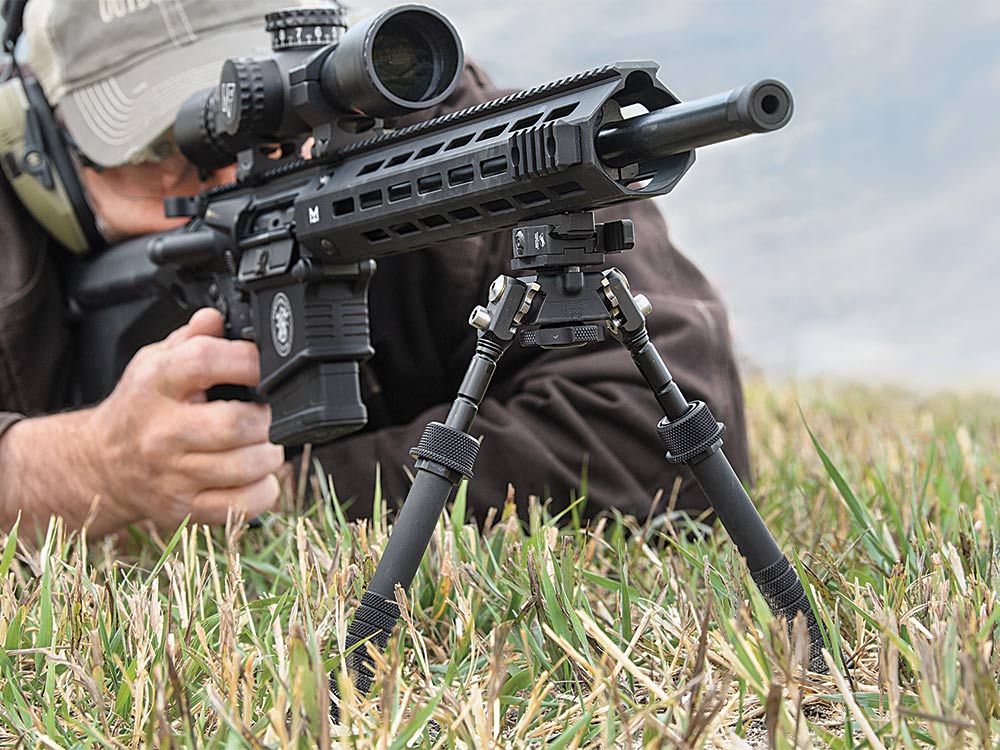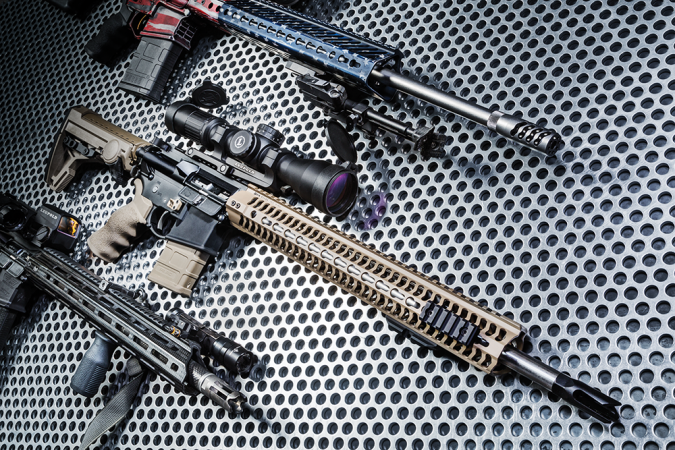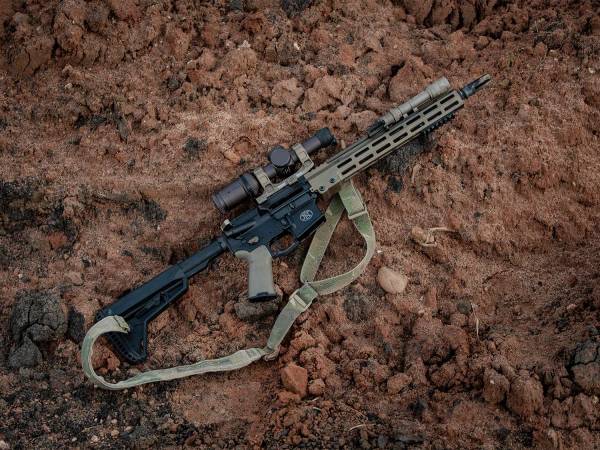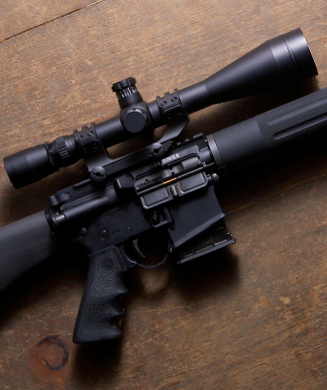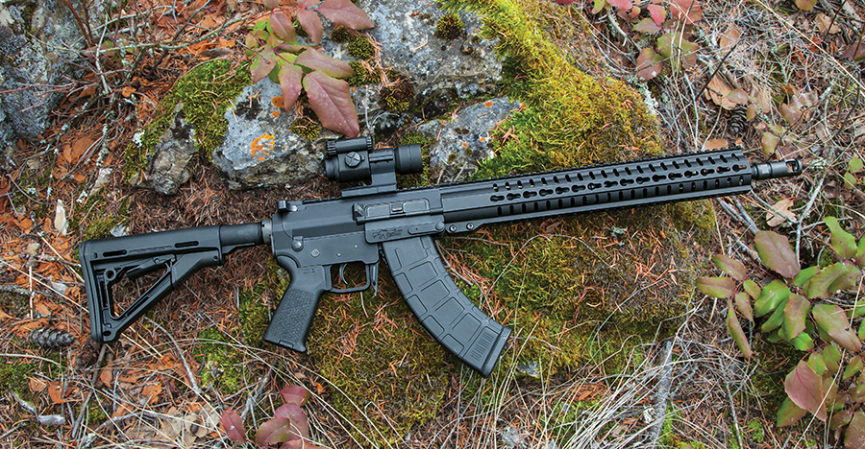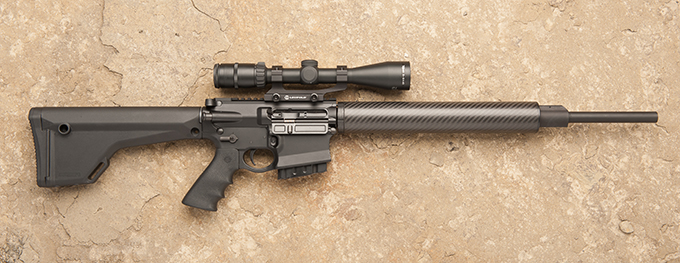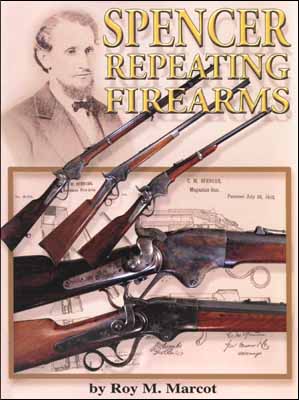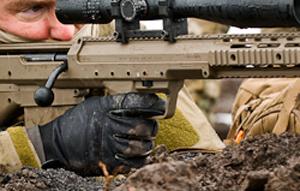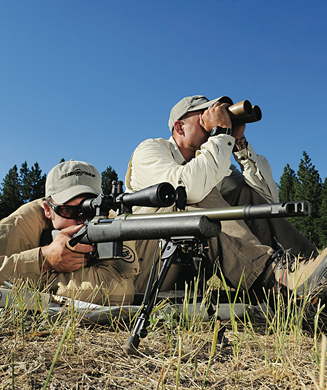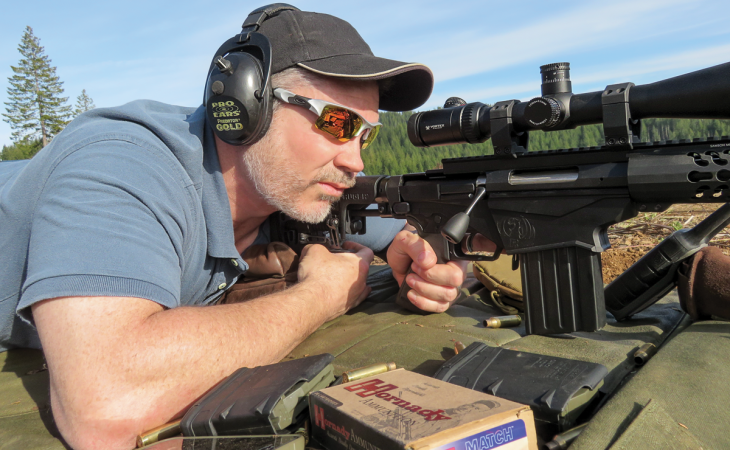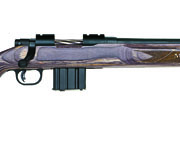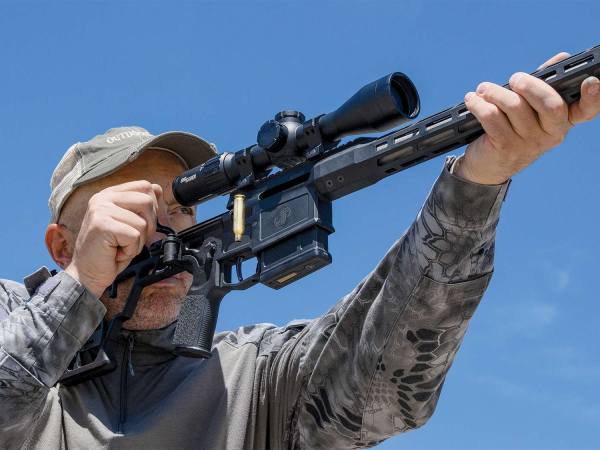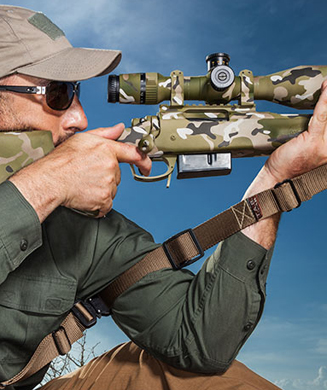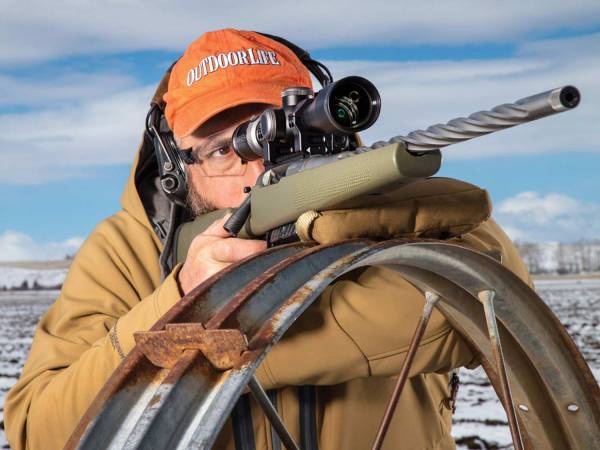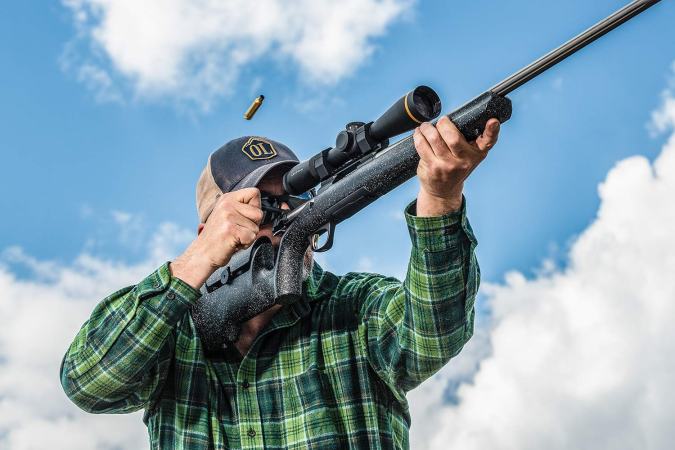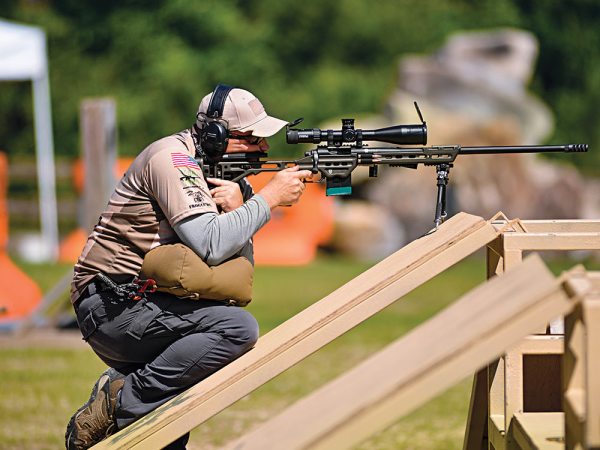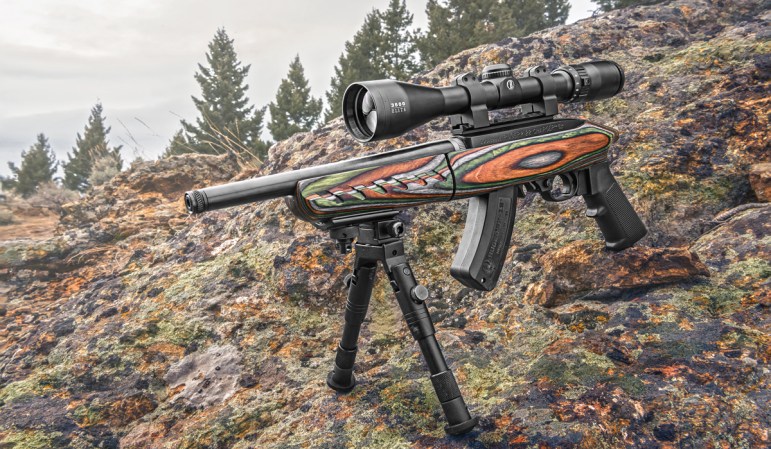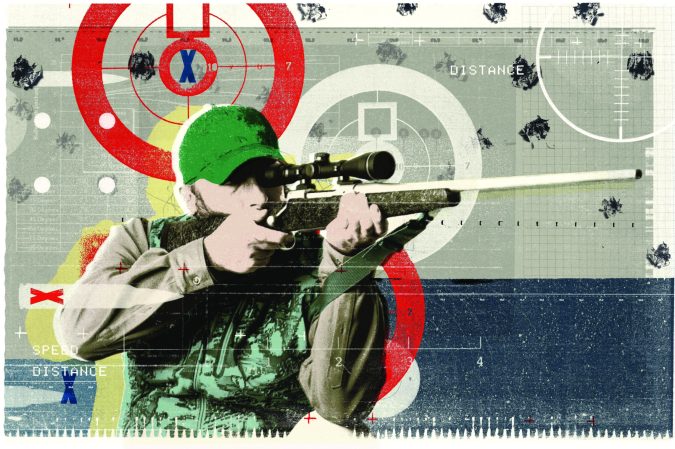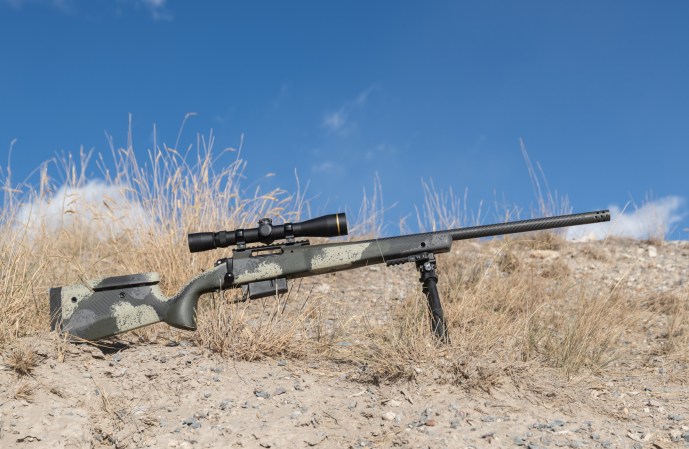We may earn revenue from the products available on this page and participate in affiliate programs. Learn More ›
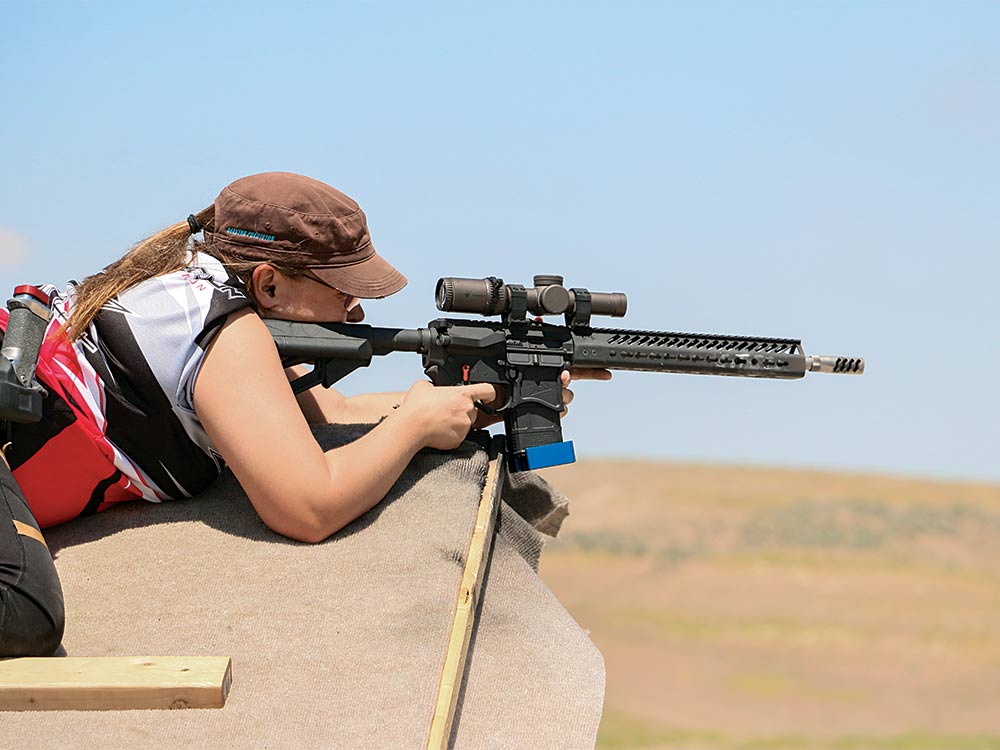
Truth is, ARs violate some of the basic precepts of rifle accuracy, and if you’re not aware of the AR’s pitfalls, you’re going to end up with more Hail Marys than Hell Yeahs!
“The way an AR is put together, with the handguard affixed to the receiver, creates a point of flex that will cost you accuracy if you’re not careful,” says Glen Seekins, the owner of Seekins Precision.
1. A Light Touch
Seekins builds some of the most accurate gas guns around, and puts them through the wringer himself in long-range tactical matches against shooters who are mostly using bolt guns.
The main rule, Seekins says, is that less is more.
“The less input you give to the rifle while shooting, the more accurate it will be,” he says.
In practice, what this means is that you want to keep the pressure from your cheek and hands on the gun to a minimum. Don’t bear down with your face on the stock, and avoid trying to force the reticle onto the target by pushing the rifle around with your hands after the rifle has been positioned. Instead, position the rifle so that its natural point of aim is on your target, so you aren’t torquing it after the fact.
2. Using a Bipod
The normal way to shoot a rifle with a bipod is to load it by putting forward pressure on the butt pad with your shoulder to take the play out of the legs. With a bolt gun, I typically tell my students to use about 5 pounds of pressure—which translates roughly to the force required to hold a book in place were you to place one between your shoulder and the stock.
With an AR, however, this is too much. “You essentially want to let the rifle free-recoil when shooting,” Seekins says.
3. Trigger Smarts
ARs are among the most ergonomic firearms made, and with their easy-to-grasp pistol grips, you’d think you’d want to wrap your hand around them when shooting at long ranges. That, however, would be a mistake, according to Seekins. Most precision shooters—even those running bolt guns—place the thumb of the trigger hand alongside the grip, resting it gently against the stock.
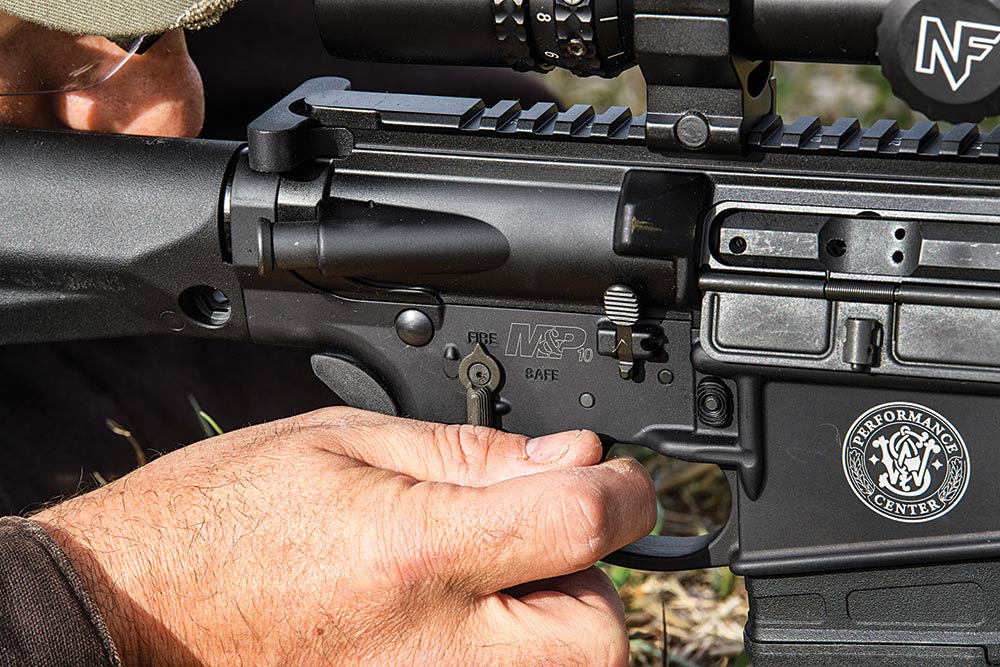
The pad on the trigger finger, as always, should be centered so that it is in the middle of the face of the trigger and goes straight across the trigger at a 90-degree angle with respect to the axis of the barrel.
This is a critical point because triggers have a lot of slop and play to them. If you don’t believe me, check the trigger on your favorite rifle right now and you’ll see that it wiggles like a loose tooth. So unless your finger is dead center on the trigger and moves so that it comes straight backward, you’ll end up putting sideways pressure on it when shooting, leading to poorer accuracy.
Finally, rest the tips of the other fingers on your shooting hand against the front of the grip, with a slight amount of rearward pressure to seat the stock against your shoulder.
Read Next: 9 Shooting Tips for Better Long-Range Accuracy
4. The Mental Game
Another pitfall with ARs is their high-capacity magazines. With 20 or more rounds at your disposal, it is easy to get lulled into a sense of complacency. After all, if you miss with one shot, you have so many more at your disposal, right?
This is a dangerous mindset and needs to be avoided.
Mentally shoot the gun as though it were a single-shot, and focus on getting a hit with each press of the trigger.
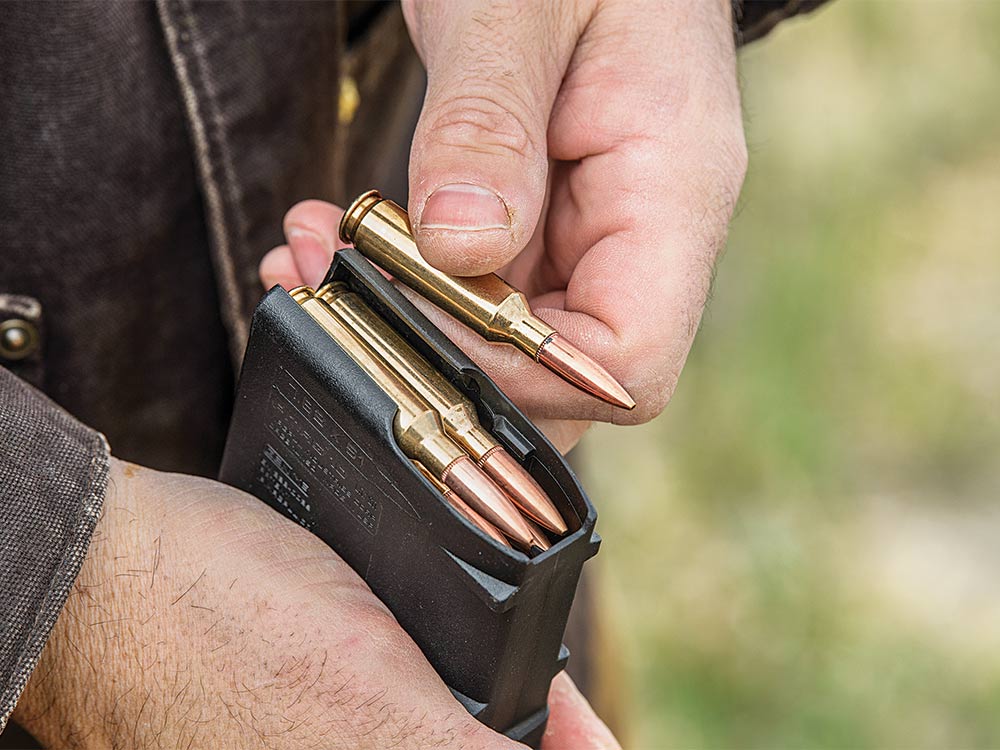
5. Magazine Issues
Here are a couple more tips to consider with your magazines. Don’t load your 20-rounders to full capacity. With those last couple of rounds, the spring in the magazine will be fully compressed, which puts extra pressure on your bolt, leading to more drag, less consistency, and potentially degraded accuracy. Also, be aware that with your last shot from a magazine, when the bolt locks back, the rifle has different harmonics since it’s only experiencing half the recoil cycle, which can alter your point of impact.
This is a lot to keep in mind, but these details will help you make a shot when it counts most.

